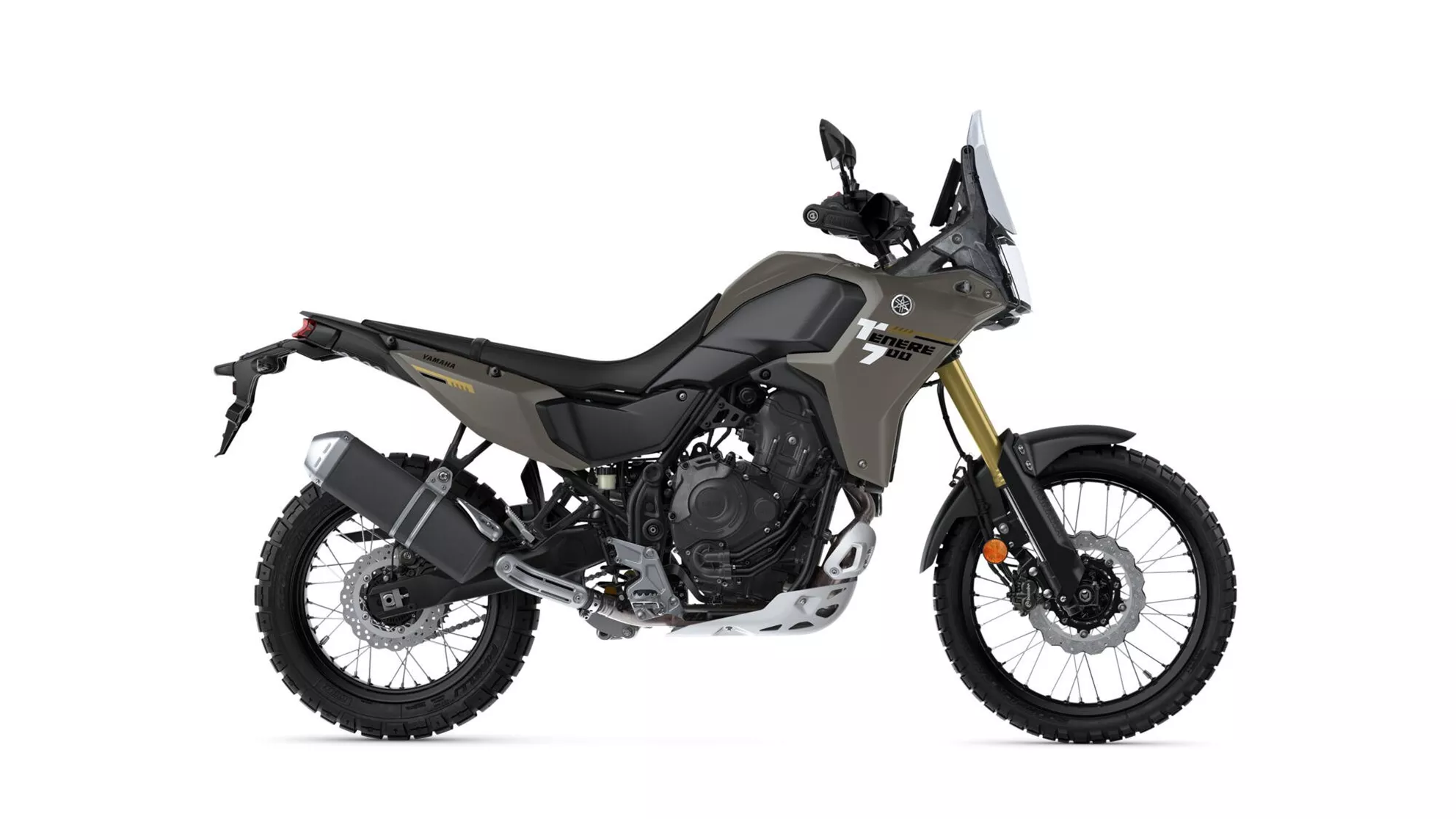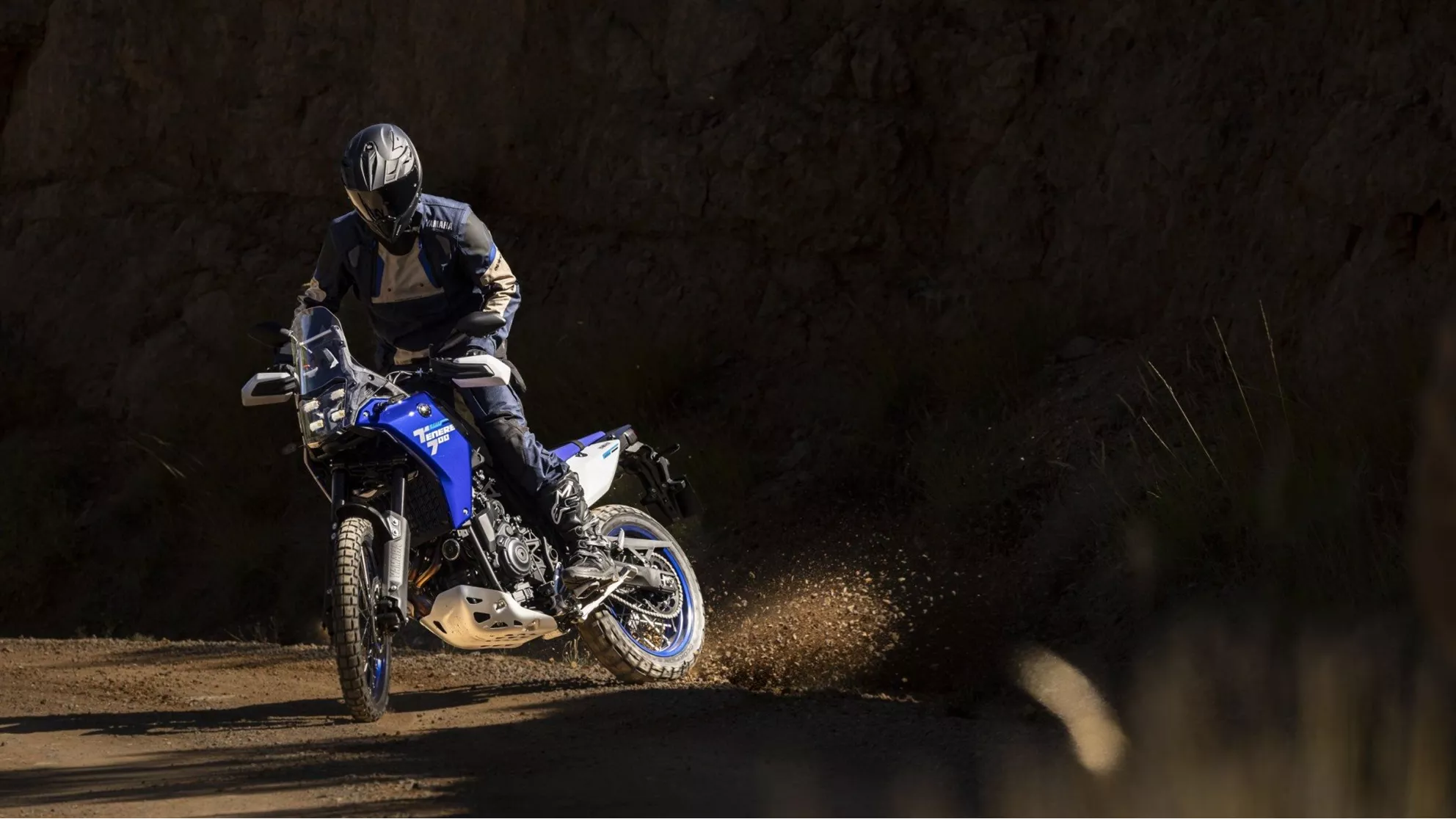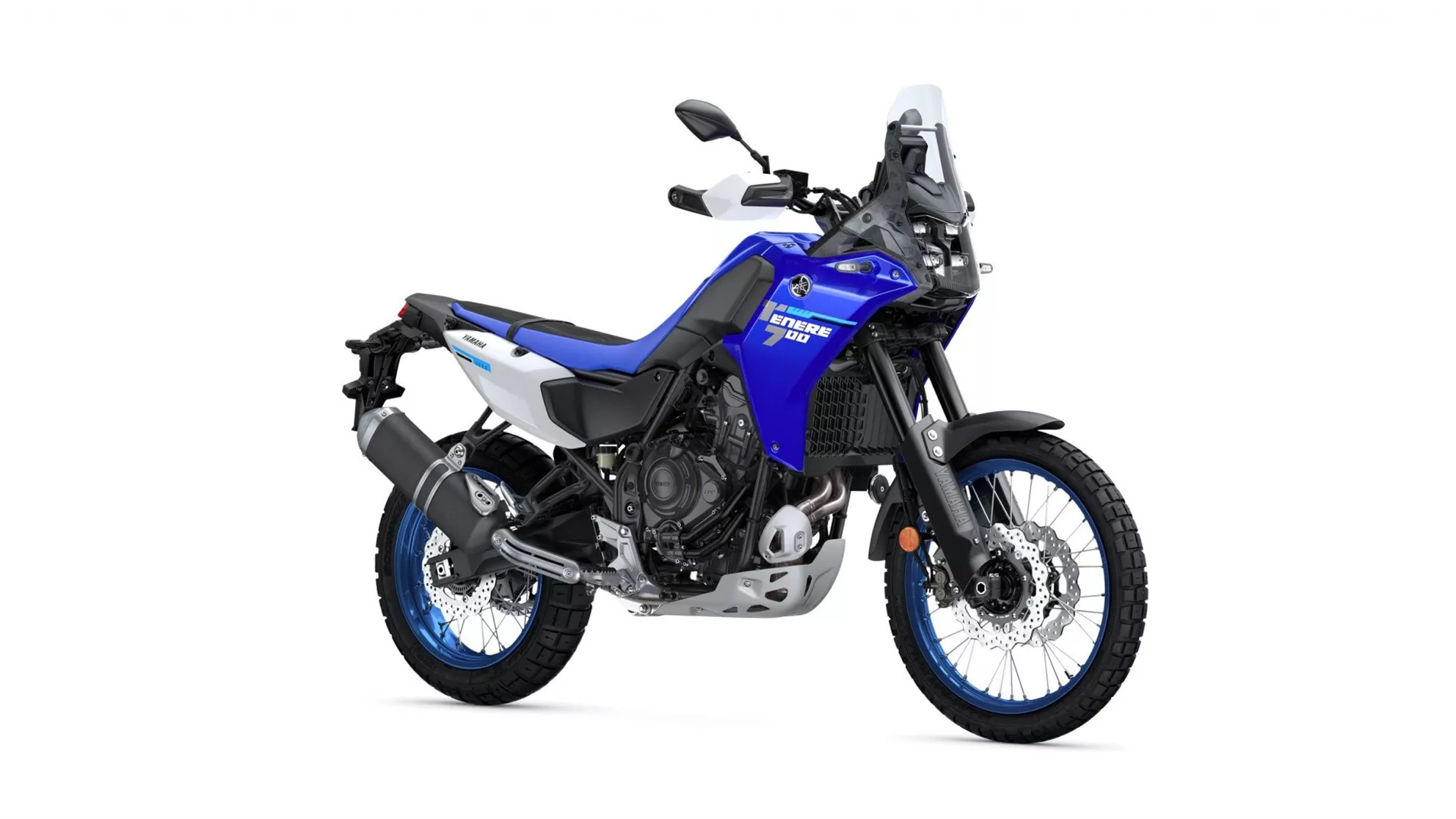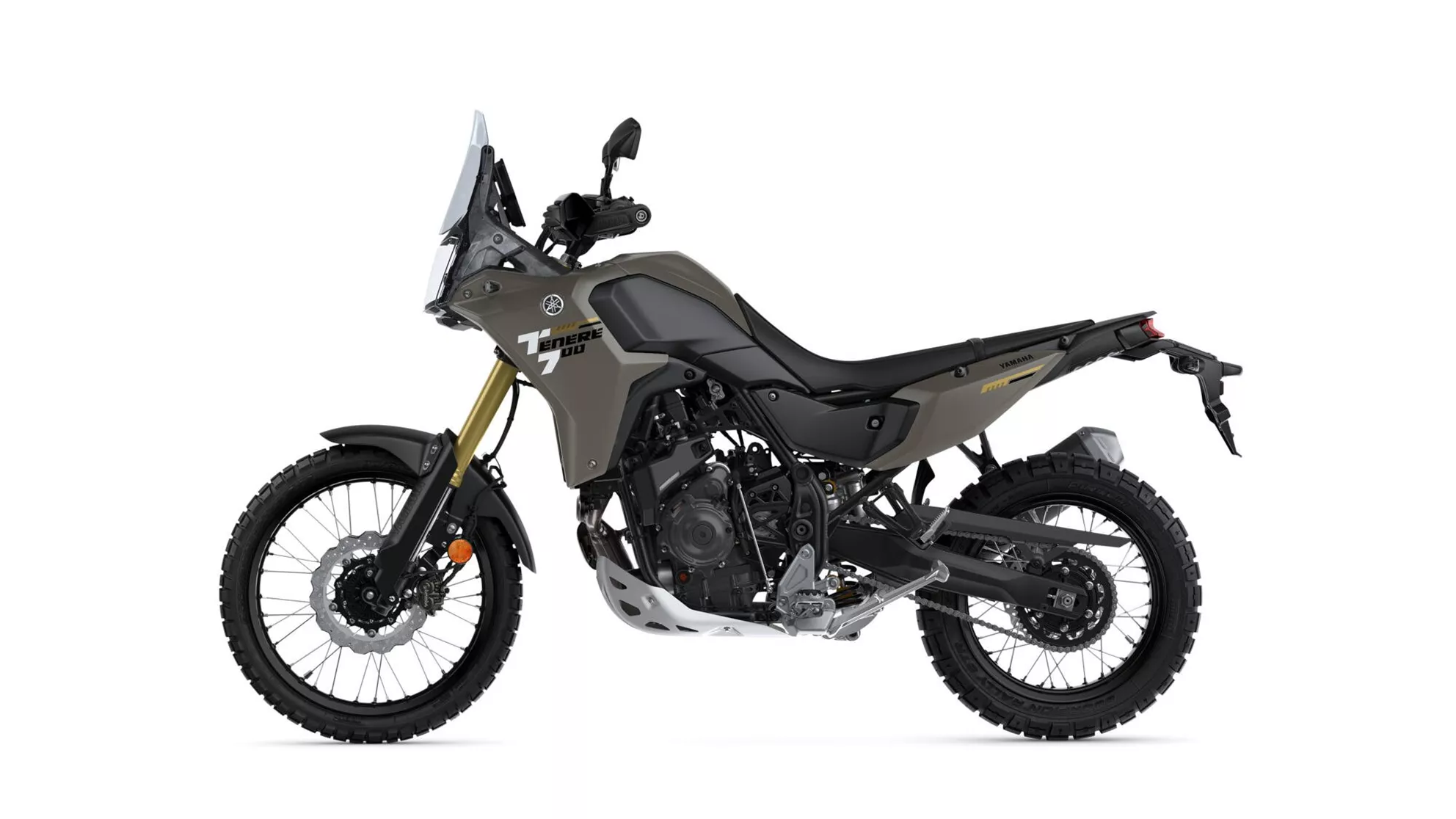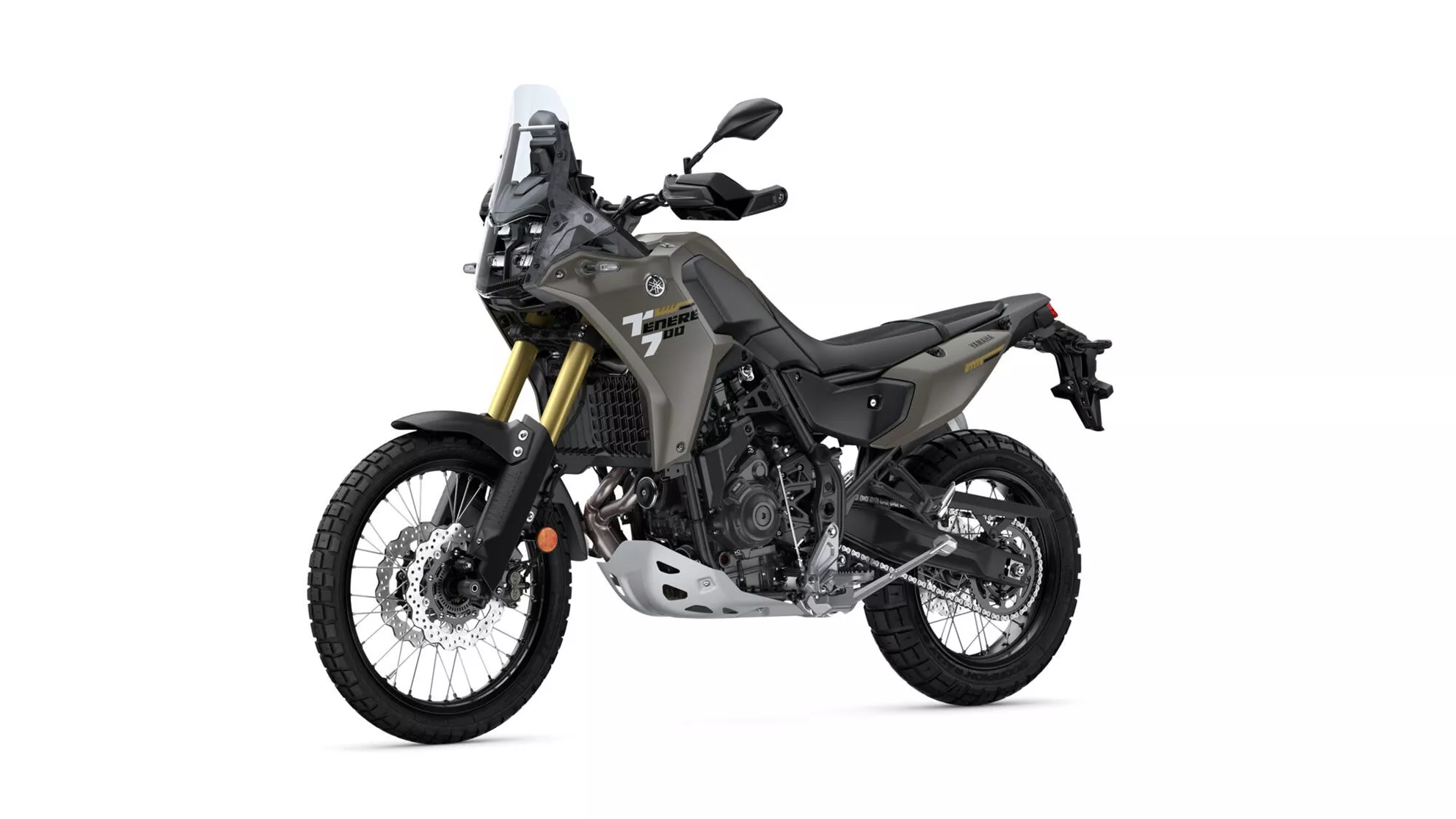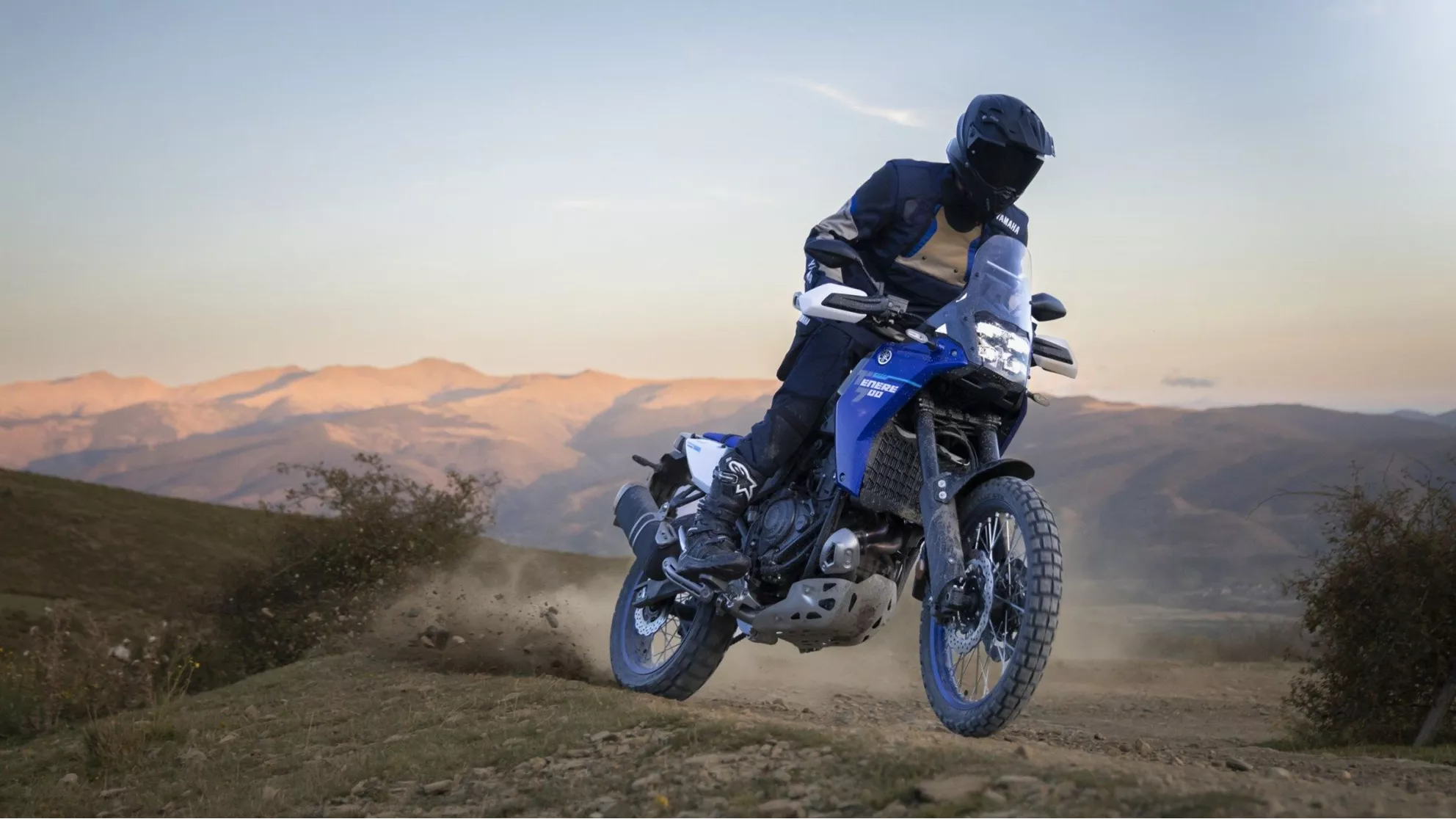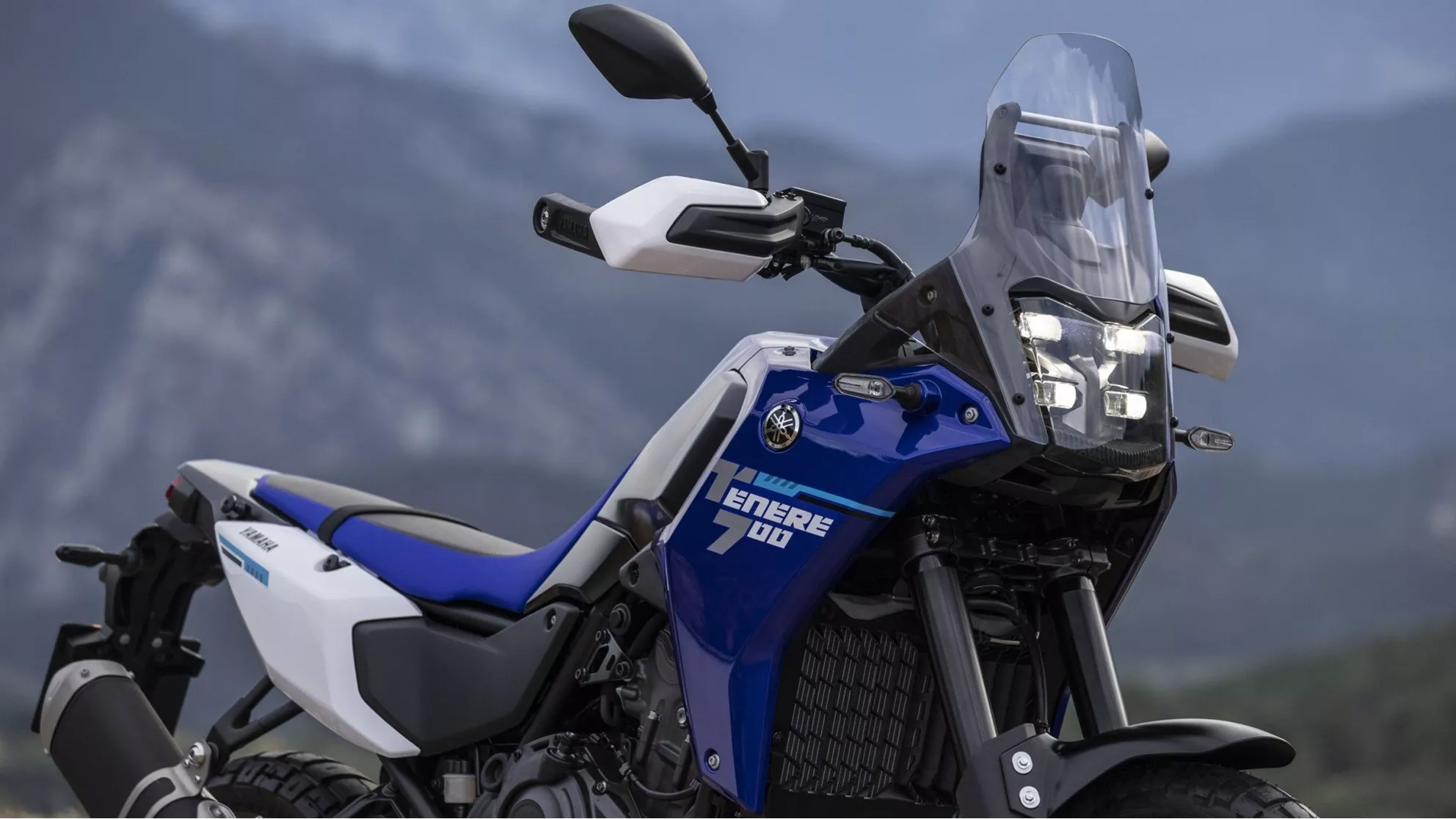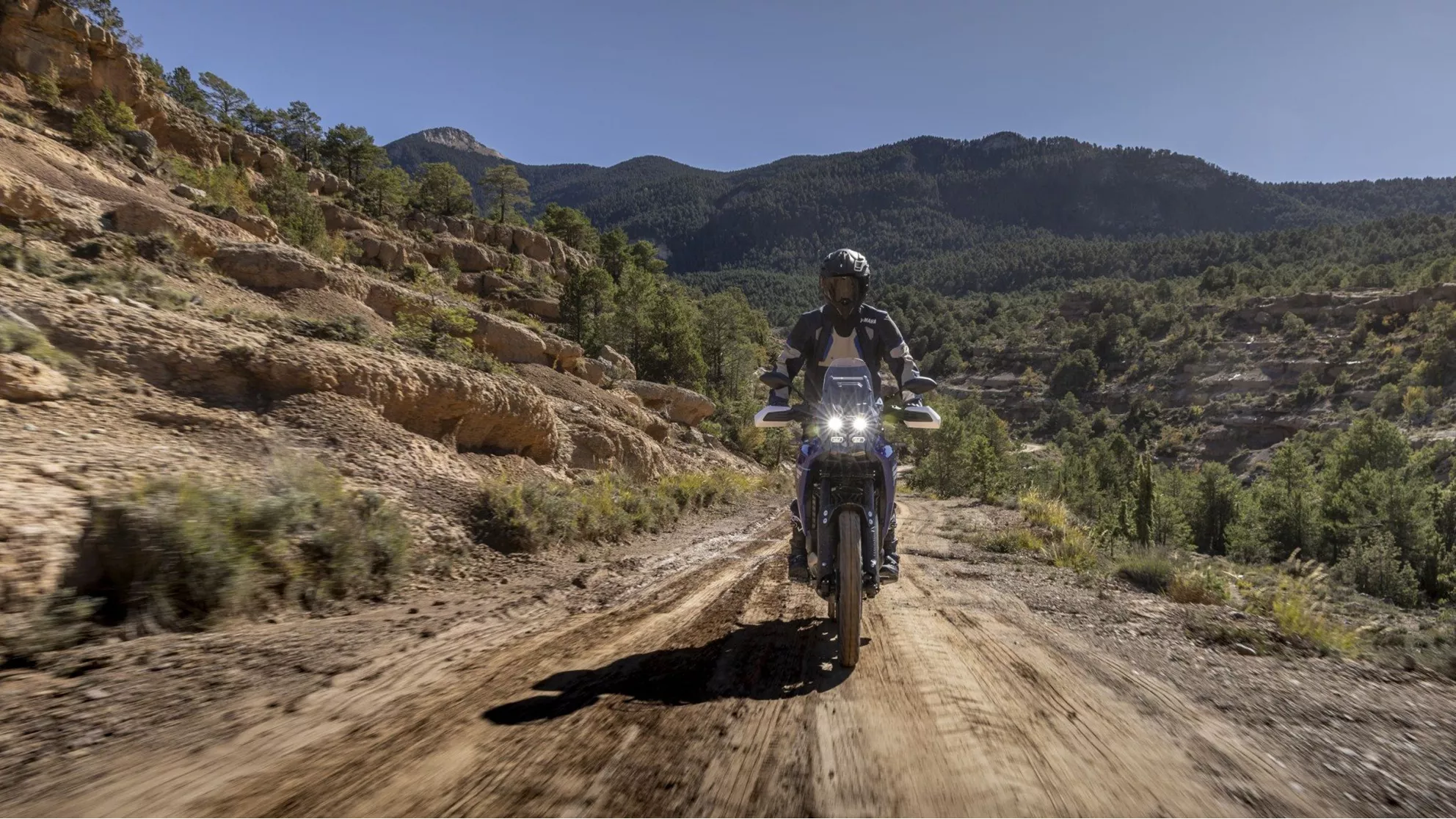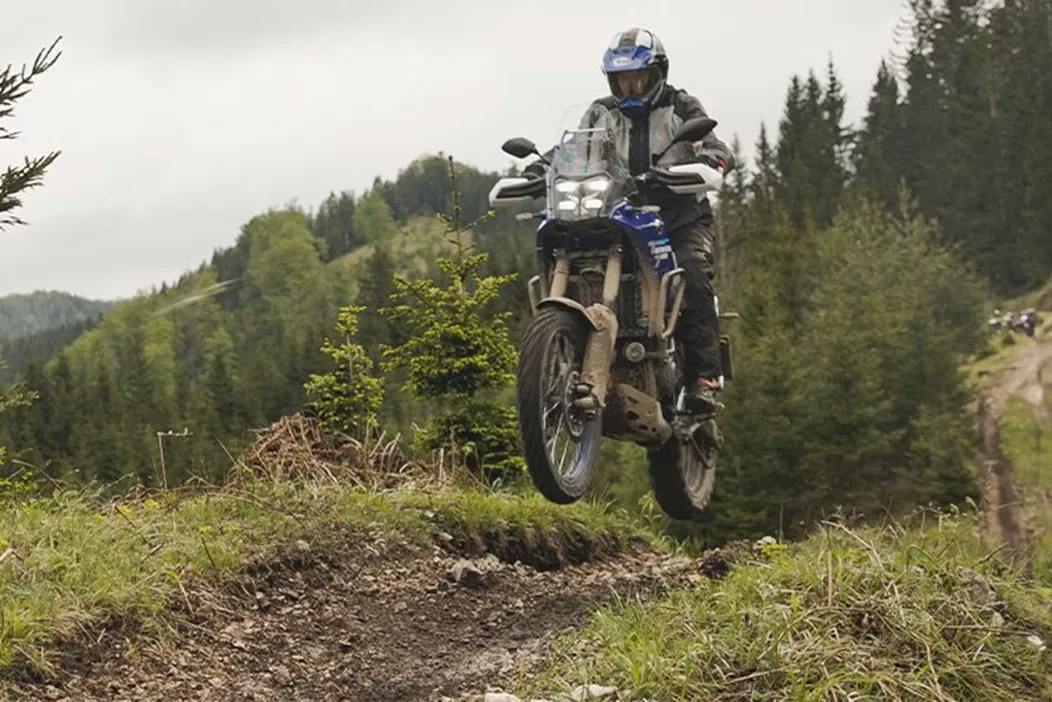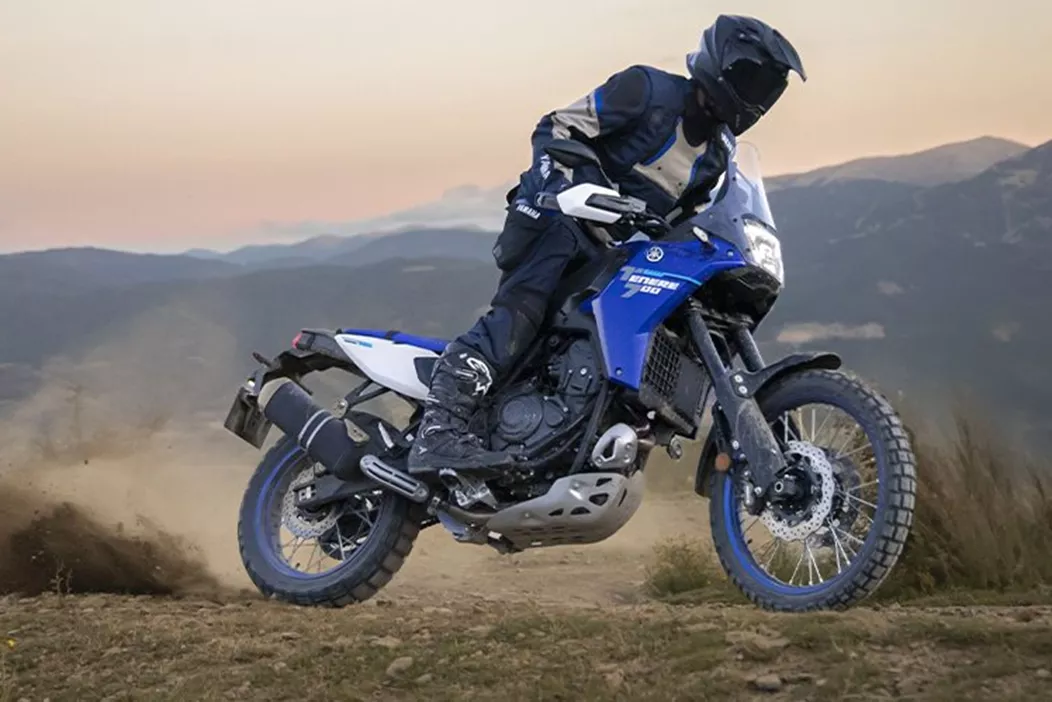The Yamaha Tenere 700 has gained a reputation in recent years for its off-road prowess and durability. For the 2025 model year, Yamaha has revamped several key elements of this adventure tourer, focusing less on radical changes and more on targeted technical and ergonomic tweaks. Instead of another off-road showcase, the new version was tested under road conditions: on narrow country roads in the Bucklige Welt, through twisty sections of the Alpine foothills, on highway stretches, and in urban traffic. Wet weather was also part of the program. The test crew, consisting of editor-in-chief Poky, enduro traveler Wolf, and adventure tourer McGregor, evaluates the revamped Tenere 700 from various perspectives.
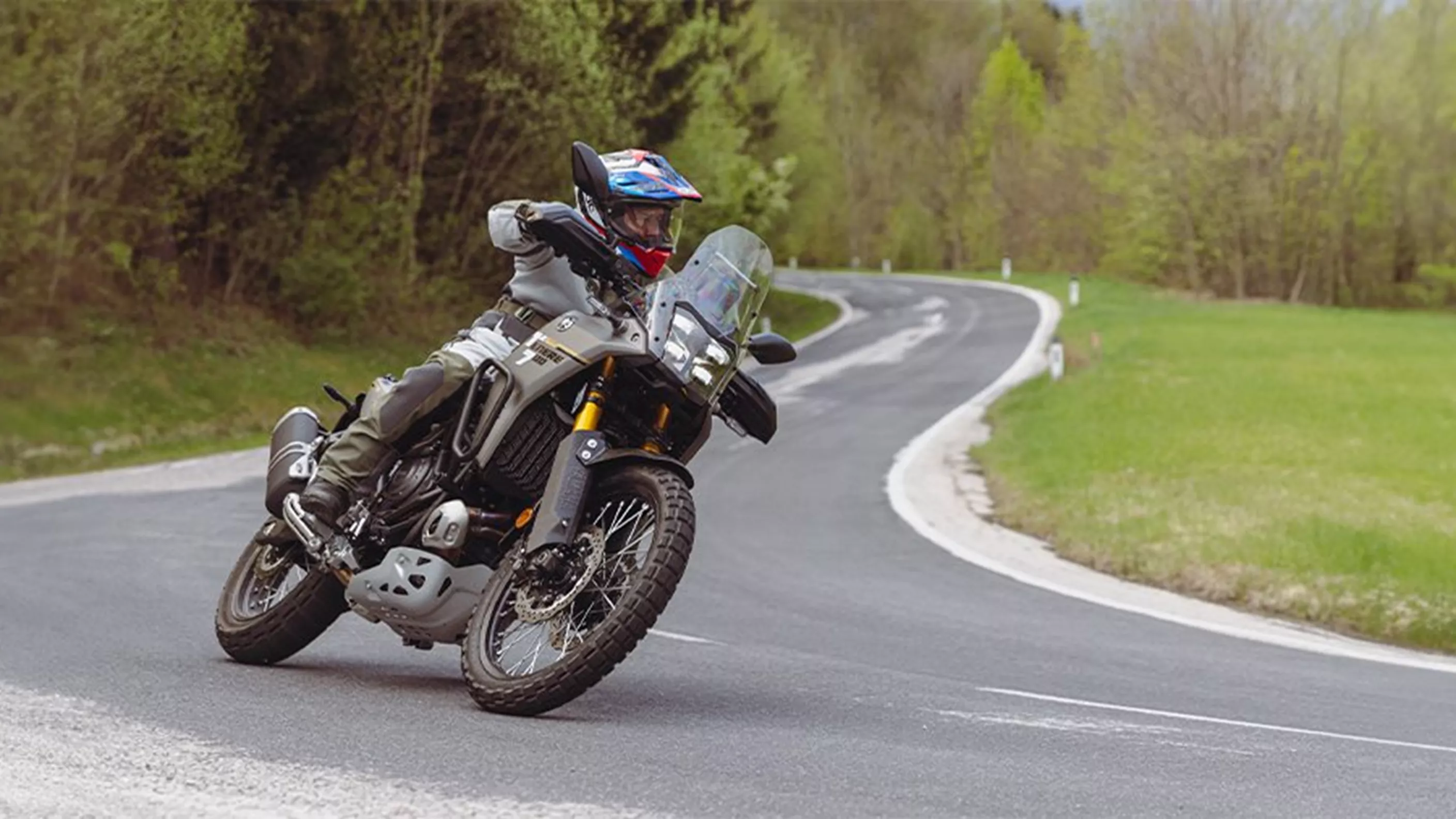
Yamaha Tenere 700 2025 Road Test Review
What Can the New Tenere 700 Really Do on Asphalt?
The Yamaha Tenere 700 returns to the road in 2025 with significant updates. We've pushed this adventure bike beyond desert trails and tracks into a real-world road test across Austria, uncovering some exciting insights.
&width=72&height=72&bgcolor=rgba_39_42_44_0&mode=crop)
Gregor
published on 30/05/2025
Yamaha Tenere 700 2025 - Key Facts
Engine and Drive Train
| Engine type | In line crankpin offset |
|---|---|
| Bore | 80 mm |
| Stroke | 68.6 mm |
| Engine power | 73.4 HP |
| Rpm at Max. Power | 9000 rpm |
| Torque | 68 Nm |
| Rpm at Torque | 6500 rpm |
| Compression Ratio | 11.5 |
| Fuel system | Injection |
| Starter | Electric |
| Clutch Type | Multiplate in oil-bath |
| Transmission | Chain |
| Transmission Type | Gearshift |
| Number of gears | 6 |
| Cylinders | 2 |
| Strokes | 4-Stroke |
| Valves per cylinder | 4 |
| Valves | DOHC |
| Cooling | liquid |
| Displacement | 689 ccm |
Suspension Front
| Front suspension | Upside-Down telescopic fork |
|---|---|
| Diameter | 43 mm |
| Travel | 210 mm |
| Adjustment | Compression, Preload, Rebound |
Suspension Rear
| Suspension | Swing arm |
|---|---|
| Shock absorber | Monoshock |
| Travel | 200 mm |
| Adjustment | Compression, Preload, Rebound |
| Material | Aluminium |
Chassis
| Frame | Steel |
|---|---|
| Frame type | Double cradle, Central tube |
| Rake | 27 degree |
| Trail | 105 mm |
Brakes Front
| Type | Double disk |
|---|---|
| Diameter | 282 mm |
| Actuation | Hydraulic |
Brakes Rear
| Type | Disc |
|---|---|
| Diameter | 245 mm |
Assistance Systems
| Advanced Rider Assistance Systems | ABS, Riding modes, Ride by Wire, Traction control |
|---|
Dimensions and Weights
| Front tyre width | 90 mm |
|---|---|
| Front tyre height | 90 % |
| Front tyre diameter | 21 inch |
| Rear tyre width | 150 mm |
| Rear tyre height | 70 % |
| Rear tyre diameter | 18 inch |
| Length | 2370 mm |
| Width | 935 mm |
| Height | 1455 mm |
| Wheelbase | 1595 mm |
| Seat Height | 875 mm |
| Kerb Weight (with ABS) | 208 kg |
| Fuel Tank Capacity | 16 l |
| Range | 372 km |
| Combined fuel consumption | 4.3 l/100km |
| Euro Norm | Euro 5+ |
Equipment
| Equipment | Connectivity, LED-Headlights, TFT display, USB-C socket |
|---|
Yamaha Tenere 700 2025 Update: New Electronics and Core Values
At the heart of the tech update is the newly installed ride-by-wire system, replacing the previous throttle cable. This allows for the first-time introduction of two riding modes—“Explore” and “Sport”—along with a switchable traction control. Also new is an optional quickshifter with a blipper function, enabling clutchless shifting in both directions, although this wasn't fitted on our test machine. The suspension has been revised in several areas and is now fully adjustable, including front preload and rear compression damping.
Ergonomics and display have also been refined: a new 6.3-inch TFT display offers two display modes, the control concept has been revised, and the switchgear on the handlebars and cockpit has been redesigned. However, Yamaha continues to forgo features like cruise control or multi-stage traction control, citing the model's functional and minimalist character. Whether these decisions meet the demands of modern touring was closely examined during the testing process.
Riding Modes, Electronics, and Controls – First Impressions on the Road
In a direct road test, it quickly becomes apparent that the new riding mode logic is one of the key changes for everyday use. The two modes, "Explore" and "Sport," are distinctly different. The Sport mode offers a more immediate throttle response, making it the preferred choice for spirited riding, while "Explore" provides a gentler character, ideal for wet conditions or urban traffic. Poky noted that the Sport mode "reminds him of the old throttle cable Tenere"—particularly on wet roads, where switching to Explore mode seems wise. The previously typical CP2 load changes at low revs are notably less abrupt, even in Sport mode.
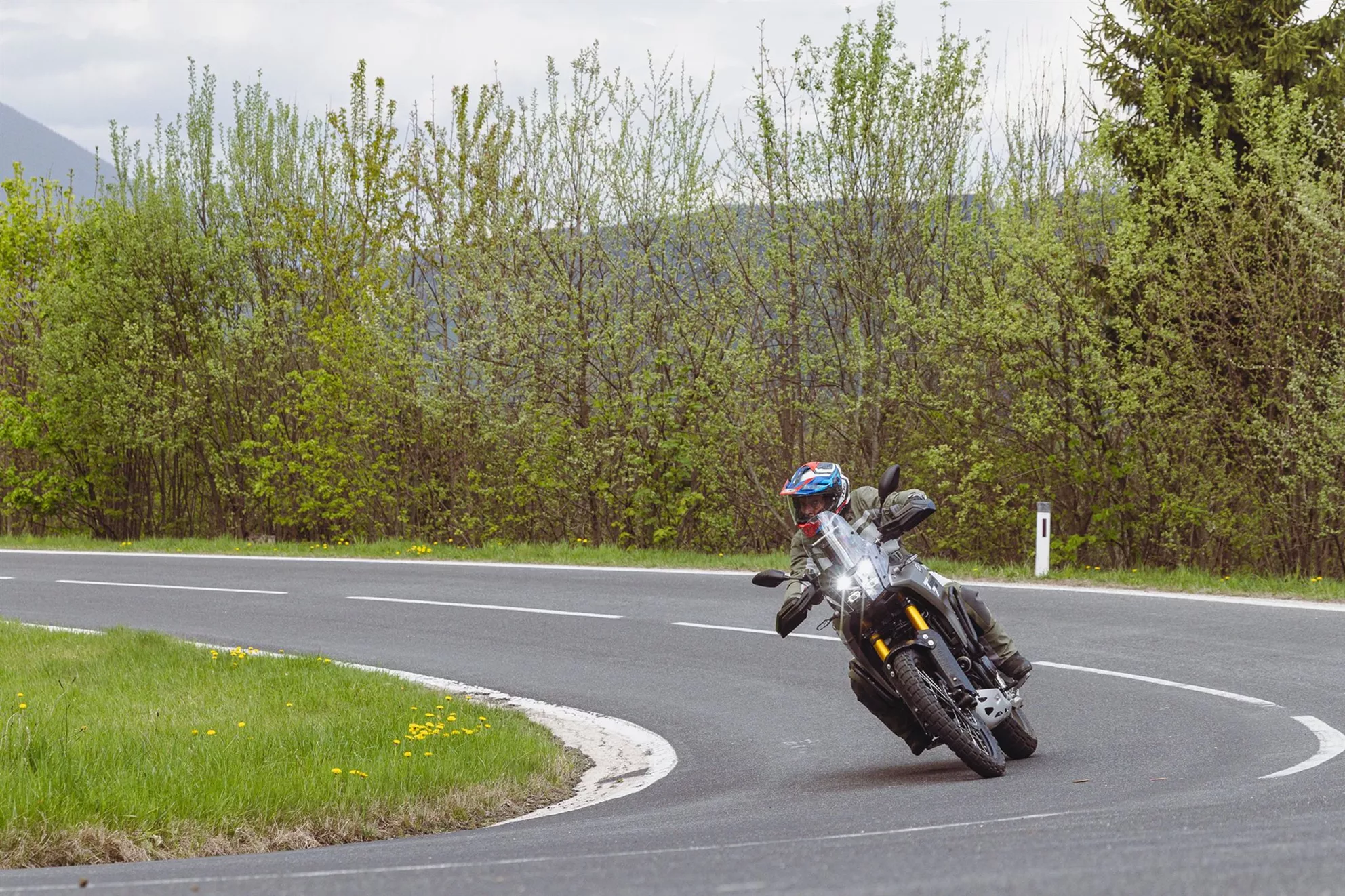
On dry asphalt, the new traction control of the Tenere isn't really necessary, as the CP2 remains finely controllable even with electronic management. However, it proves useful under adverse conditions.
The traction control is limited to a single setting, either On or Off, which Yamaha justifies by pointing to the model's purist orientation. Similarly, there's a three-stage ABS, which didn't make much of an impact during road use—it remained continuously active. The assistance systems can be deactivated not only through the menu accessed via the mode switch but also very easily using the ABS button in the cockpit. Just hold it down for three seconds, and the systems revert to the last setting. This offers the greatest advantage in loose terrain.
The new TFT display offers two modes: an analog-style look with a simulated round instrument and a simplified, rally-inspired variant. The graphics are considered modern and clear. In terms of controls, a joystick on the left handlebar and a mode switch on the right are used. Poky criticized the separation of functions: although there's a switch labeled "Mode," it doesn't directly switch between the two riding modes—a separate action is required for that. "I would have put that directly on a button," was his comment on the logic of this design choice.
Yamaha Tenere 700 2025 - Riding Impressions for Tall Riders
Ergonomically, the Tenere 700 remains well-suited for taller riders. At 1.87 meters tall, Poky found the bike manageable even over prolonged riding positions, although the center of gravity remains perceptibly high. The steering behavior stays fairly neutral like its predecessors, while quick direction changes require active effort—a typical trait of bikes with a 21-inch front wheel. There was criticism regarding the braking performance. Poky noted the noticeable slack in the fork, which dives with little resistance before the damping kicks in. The suspension could work a bit more progressively here. Nevertheless, the motorcycle could be nimbly handled through twisty roads, providing an overall coherent riding experience. However, motivated riders might prefer the Tenere 700 Rally, both on and off paved roads, for its superior KYB suspension.
Seat Comfort, Pillion Capability, and Wind Protection in Practical Comparison
One issue that stands out on longer tours is the ergonomics for both rider and pillion. The new continuous seat for 2025 allows for greater freedom of movement, which is useful for off-road use, but offers limited comfort on long road stretches. Poky noted that the padding compresses quite quickly, leading to discomfort, especially on extended highway runs. The pillion position was also addressed: for smaller passengers, forward visibility is restricted, and standard grab handles or other holding options are absent. Poky's conclusion: "There are definitely more interesting models for two-up touring."
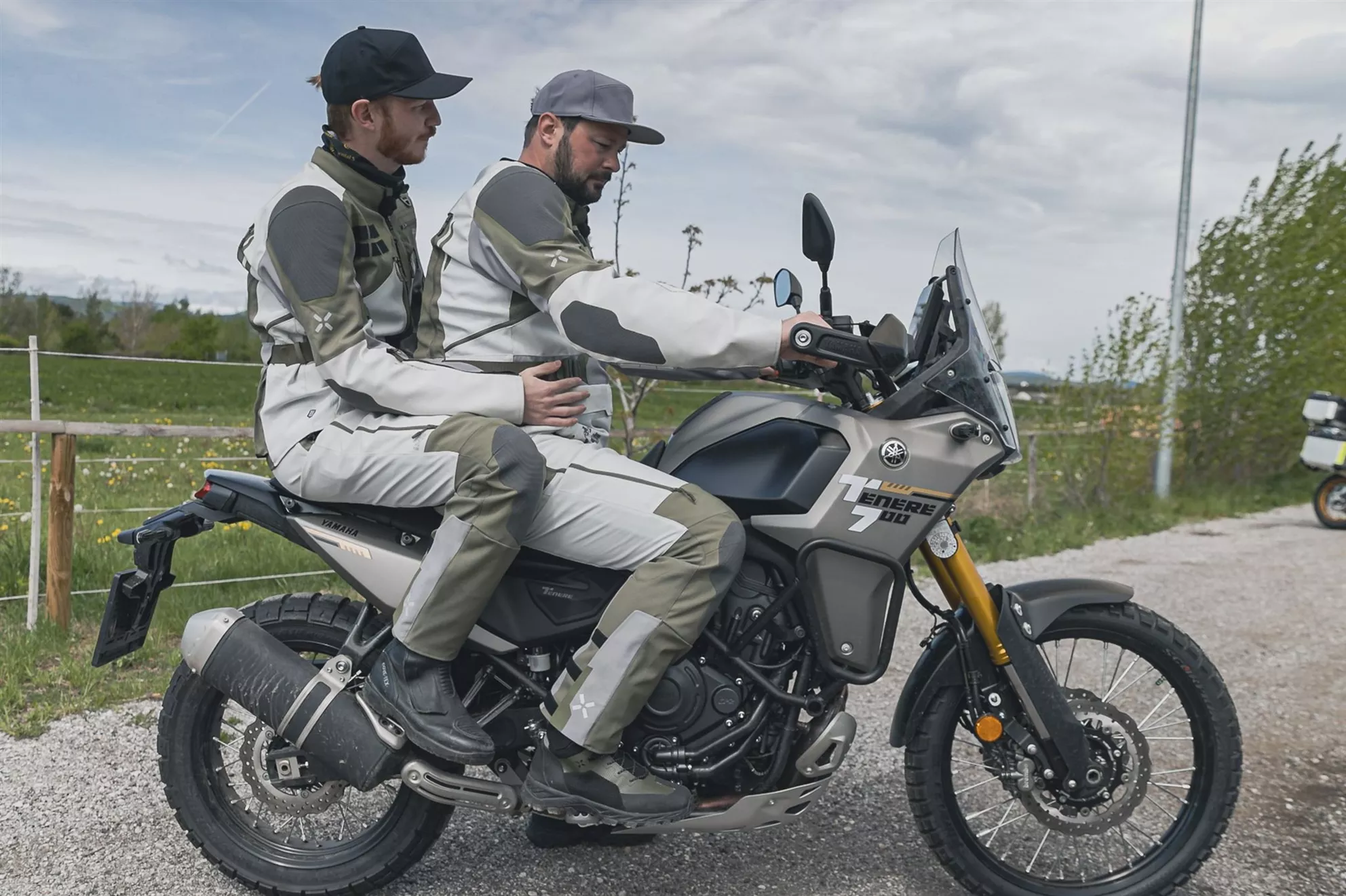
The Tenere performs adequately even when riding two-up. However, in terms of seat comfort, holding options, and payload capacity, there are mid-range adventure bikes that offer more.
Another point of criticism was the wind protection. Despite some revisions, the windshield remains rather narrow and offers little protection from wind or rain, especially for taller riders. In a rain situation, Poky noted that his shoulders were completely exposed to the weather. However, it's also worth mentioning that a larger windshield would likely detract from the Tenere's distinctive look. At least for us 1000PS testers, few adventure bikes can match the Tenere's rally-inspired appearance. This is a compromise Yamaha may have consciously made.
Yamaha Tenere 700 2025 Touring Capabilities and Seat Ergonomics from an Experienced Traveler's Perspective
Wolf brings a wealth of travel experience, having recently explored regions like the Caucasus, Albania, and Croatia. For him, it's crucial that a motorcycle remains functional on rough roads and during long stretches. He positively rates the one-piece seat, especially for active riding off paved paths. In steeper sections or under prolonged strain, he appreciates the freedom of movement this design allows. Although the seat comfort itself isn't exceptionally high, he considers it at least on par with the previous model.
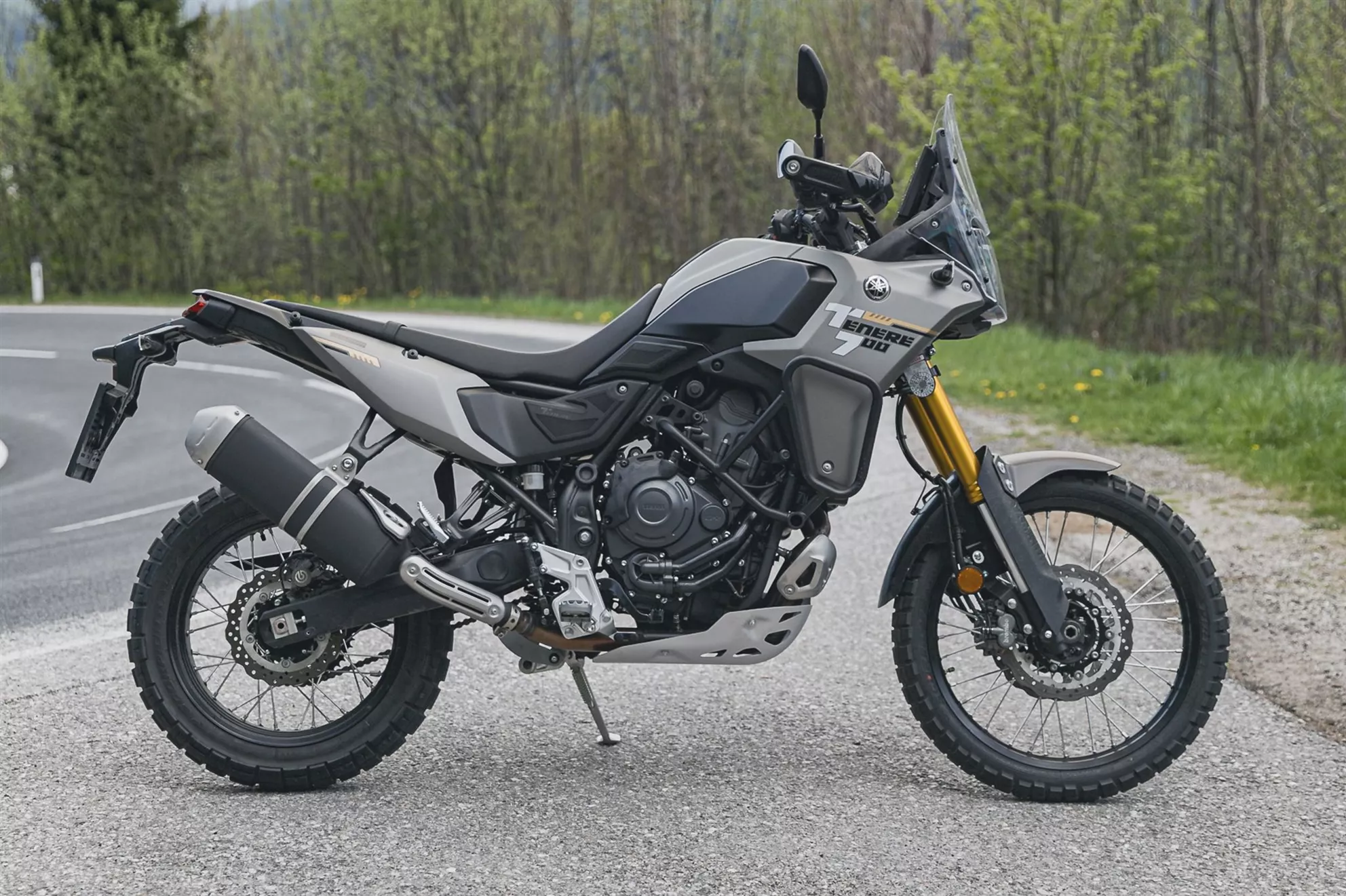
The new one-piece seat of the Tenere offers more freedom of movement but isn't the most comfortable.
The revised suspension also leaves a positive impression. With adjustable front preload and rear compression damping, it offers a practical advantage according to Wolf—especially with varying loads. During the test, the settings were not altered, as the tuning was already deemed suitable for the road. He sees further potential here for off-road use.
Handling, Height, and Center of Gravity from a Mid-Sized Rider's Perspective
At about 1.75 meters tall, Wolf isn't among the taller riders. The Tenere's seat height of 875 mm can pose a challenge in certain situations. He describes the bike as generally nimble, although it still has a relatively high center of gravity. The repositioning of the tank—now lower and further forward—has slightly reduced the top-heaviness compared to its predecessor but hasn't eliminated it entirely. When maneuvering and stopping on uneven ground, it may be necessary to act with foresight. However, this is not unusual for this type of bike, but unfortunately typical for short-legged adventure tourer riders.
Yamaha Tenere 700 Electronics from a Touring Perspective – Reliability Over Worry
A frequently discussed topic in the adventure community is the shift to electronically controlled systems, particularly the new ride-by-wire system. Wolf remains unfazed by potential concerns: he has traveled long distances on numerous modern motorcycles and has never experienced an electronics issue that left him stranded. Even on remote routes like those in Central Asia or the Balkans' highlands, modern electronics have proven reliable. The notion that a simpler cable system is automatically more robust is, in his view, outdated. His verdict: "I wouldn't hesitate to ride the 2025 Tenere around the world."
Criticism of the Missing Cruise Control – Comfort Deficit on Long Journeys
A central issue for Wolf remains the absence of a cruise control. Especially on long, monotonous stretches—common in remote regions without highways but with endless straights—he would have appreciated this feature. With the new ride-by-wire system providing the technical foundation, its absence is even more pronounced.
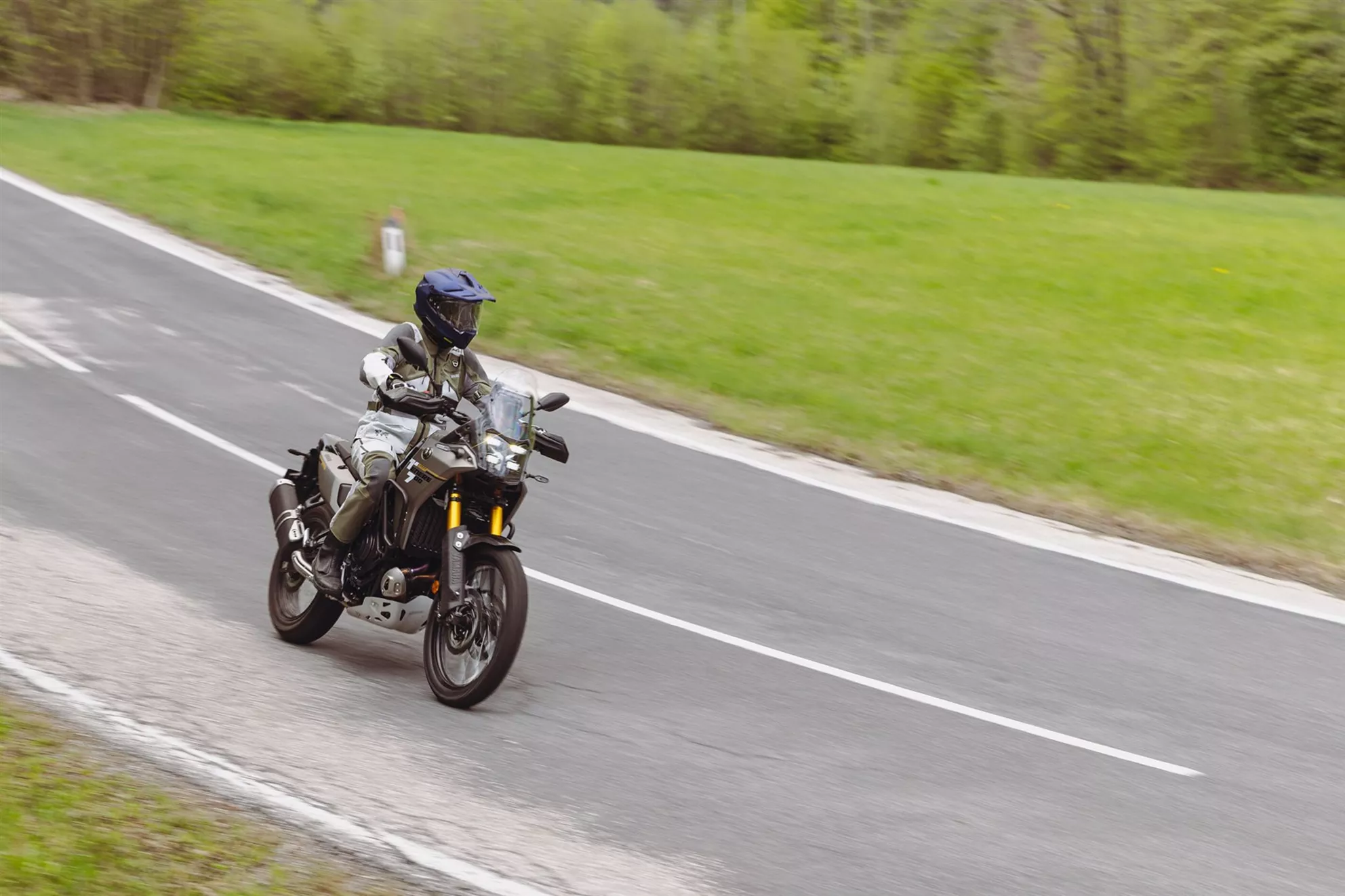
On monotonous stretches, the Tenere would benefit from cruise control. In 2025, there's no technical reason why Yamaha doesn't offer this, even as an optional extra.
Small Changes with a Big Impact in Everyday Use
In addition to the major technical updates, the 2025 Tenere also incorporates a series of practical detail improvements. According to Yamaha, these are based on extensive feedback from the community. They include a reinforced rear for better luggage capacity, a sturdier exhaust mount, wider footpegs, and a fuel cap that no longer comes loose. Wolf considers these adjustments sensible, even though they alone wouldn't justify an upgrade from the previous model. Nevertheless, he praises Yamaha for responding to genuine user feedback: "This shows they have an open ear for the community."
A significant issue remains the limited payload: with a maximum permissible weight, the Tenere is on the lower end compared to other adventure bikes. Fully equipped with panniers, accessories, luggage, and two-up, you can quickly reach or exceed the limit. However, in practice, this is often less problematic as long as you load strategically and securely. From personal experience, we know that the reliable Tenere can handle tough Albanian trails with a passenger and heavily packed luggage without issue, though technically not legally.
Quickshifter, Gearbox, and Touring Verdict for the Yamaha Tenere 700 2025
Wolf considers the new option of a quickshifter with blipper function a welcome addition, even though the gearbox already shifted well without a clutch. "A sensible tick in the configurator," he concludes. It would have been nice to test the functionality of the new shift assistant. However, the changes to the shifting mechanism—such as additional shift dogs and altered angles—were not noticeable to him during riding.
At the end of the test, one thing stands out positively for Wolf: despite the technical updates, the Tenere has retained its fundamental character. Especially in Sport mode, the throttle response is very close to that of earlier models with a cable. For him, it's clear: the Tenere 700 remains a typical Tenere despite the update—with familiar strengths and understandable limits.
Gear Used in the 1000PS Test of the Yamaha Tenere 700: HJC RPHA 60
The HJC RPHA 60 was used extensively for the first time during our spring test with adventure tourers. Notably, the helmet remains stable at higher speeds and doesn't shift—even in crosswinds or with quick head movements. On longer country road stretches, its excellent comfort becomes apparent. The ventilation works effectively, keeping the head well-tempered even on warmer days, without drafts or annoying noises. The sun visor mechanism is easily accessible and can be operated with gloves. Weighing around 1700 grams, the helmet isn't particularly light, but it falls within the typical range for this class. Additionally, the helmet is generously sized; Poky and Gregor, who usually wear size L with HJC, found size M in the RPHA 60 to be a perfect fit.
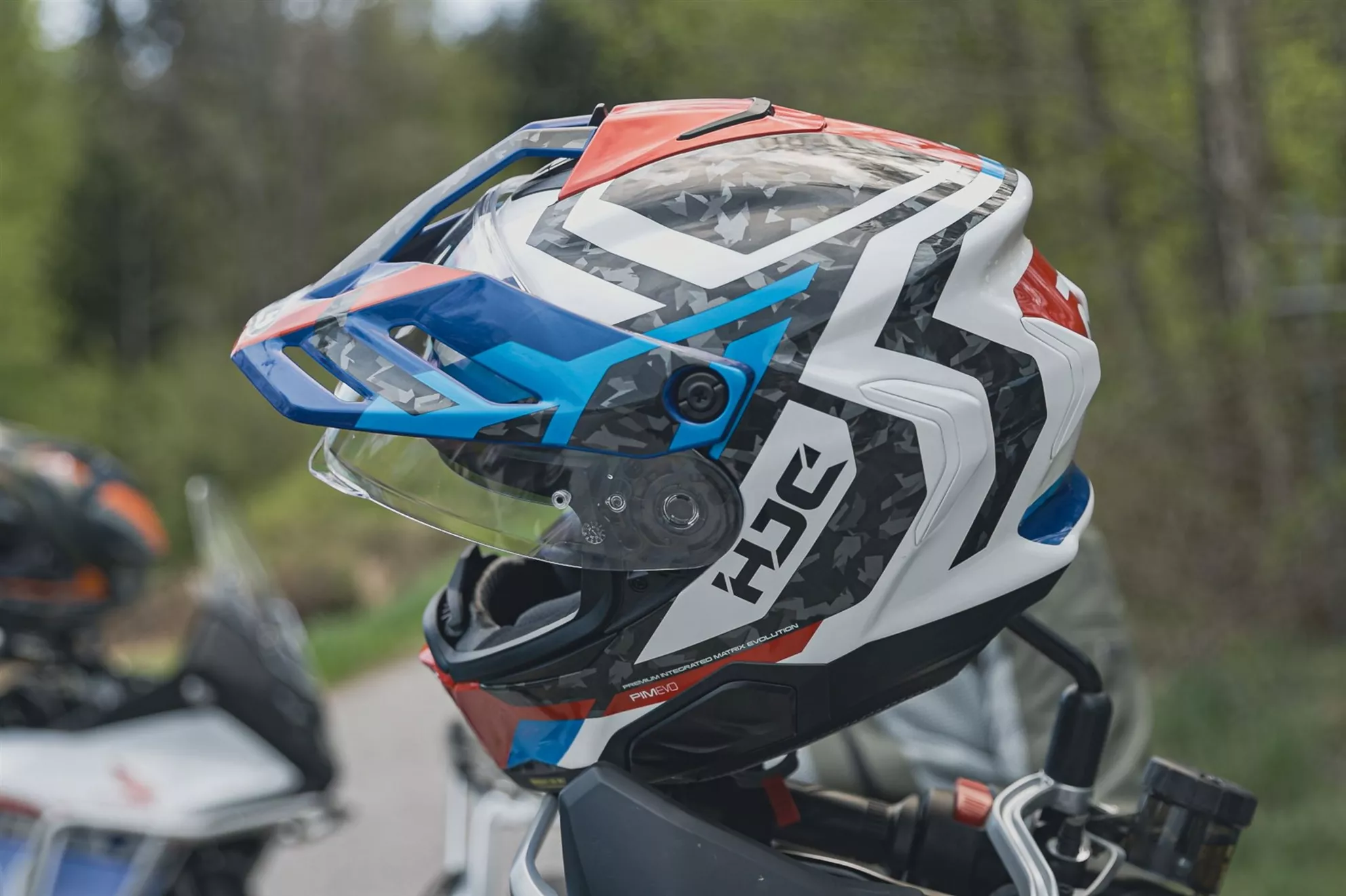
Standard Helmet HJC RPHA 60 in Test
IXS Venture Series Motorcycle Apparel in Test
The IXS Venture Series was tested in three versions: Air, STX, and Bigair. The Air version offers ample ventilation, making it suitable for warmer days. The STX model provided good protection in variable weather without overheating. The Bigair model features even more extensive ventilation options. The fit of all variants is close-fitting without being restrictive, maintaining freedom of movement. Notably, the clothing doesn't flap at higher speeds, and no pressure points were encountered during the test. The series' gloves offer a highly satisfactory touch function. All tested jacket variants can be combined with standard airbag systems.

Whether during the ride or at a pit stop, the IXS Venture motorcycle apparel is practical and comfortable.
How We Find the Best Test Routes - Calimoto
For years, we've been using the Calimoto app to enhance our test routes and discover unknown roads. The test circuit through the beautiful Lower Austrian foothills used in this test was calculated by Calimoto.
- How much does a Yamaha Tenere 700 cost?
- Here you will find an overview of the price level of new and used motorbikes!
&width=60&height=60&bgcolor=rgba_39_42_44_0&mode=crop)
Yamaha Tenere 700 2025 - Experiences and Expert Review
Gregor
In 2025, the Tenere 700 introduces ride-by-wire, traction control, and riding modes. While this might have slightly diminished its unique purist appeal in the adventure touring market, it hardly alters its character. It remains the versatile, robust adventure bike that feels at home on loose terrain and performs admirably on asphalt. If the new electronic features don't spark increased interest in the new T7, perhaps the numerous customer feedback-driven improvements will. Features like a fixed fuel cap, repositioned clutch cable mount, reinforced rear, and adjusted fairings may not seem like much, but they make the Tenere package more comfortable and practical than ever in real-world use.
Diese Adventure-Bikes sind Alternativen zur Yamaha Tenere 700
Yamaha Tenere 700 2025 Road Test Review Images
Source: 1000PS

















































